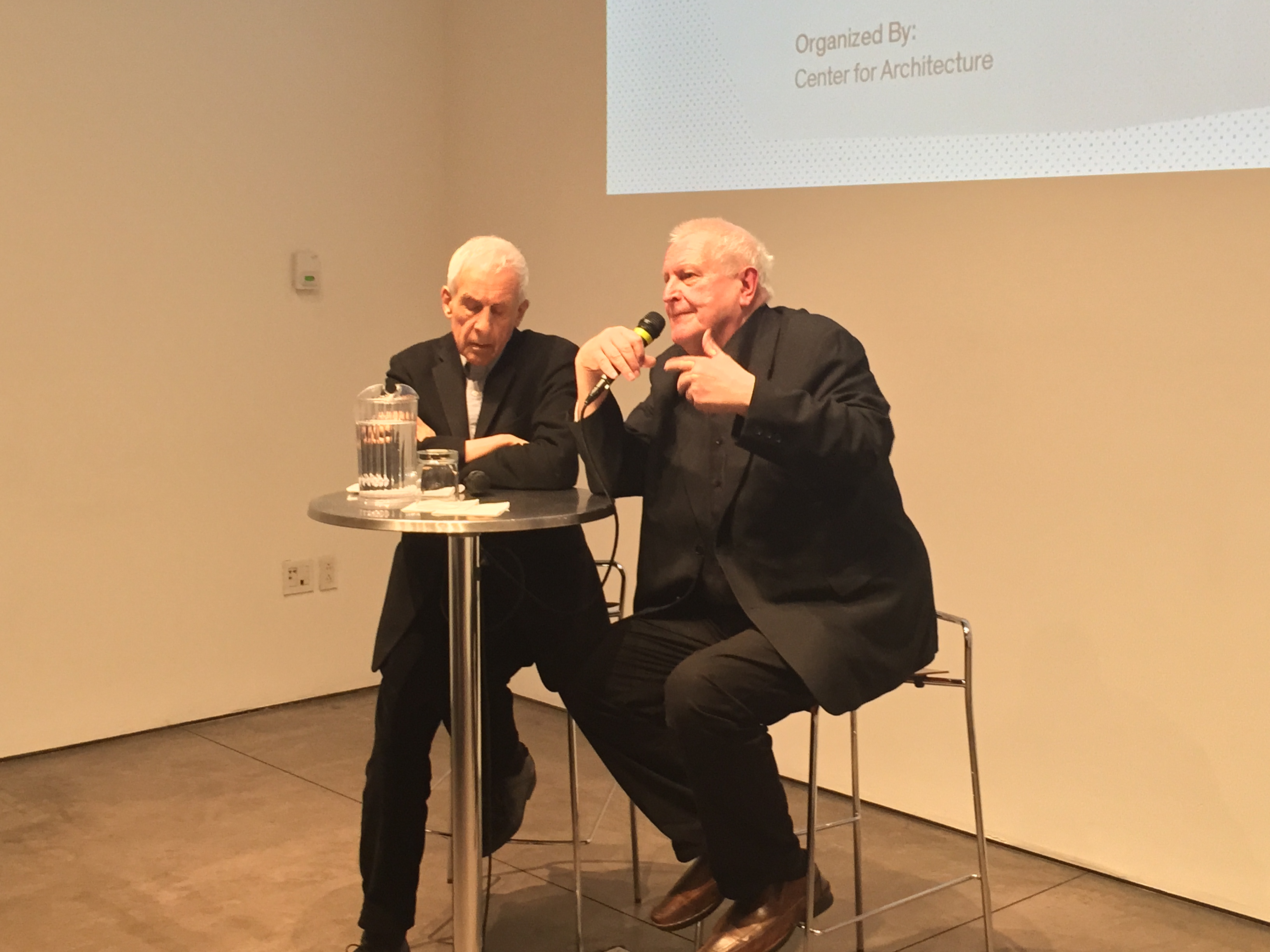by James Way
Professor Vladimír Šlapeta’s brilliant 45-minute survey was a crash course in Czechoslovakian Modernism. More than an introduction, but admittedly not an in-depth analysis. Šlapeta took the audience on a whirlwind architectural tour from the 1920s until 1938. This fecund interwar period resulted from a heightened national spirit and cross-fertilization with French Cubists and the Amsterdam School. Additionally, in 1923, Le Corbusier’s L’Esprit Nouveau was introduced to Czechoslovakia with “enormous impact.” This combination of influences led the way from form-follows-function to a more Cubist architecture. According to Šlapeta, when Le Corbusier visited Prague he was shocked that these Modernist ideas were implemented at such a large scale, though he simultaneously criticized the work for falling short of “architecture” by not including ramps.
Prague, the more popular center of innovation, yielded structural feats and formal variation. Architects Bohuslav Fuchs and Josef Stepanok reflected the “dynamic functionalism of Erich Mendelsohn” in their hydroelectric power plant. Brno became the second center of Czechoslovakian Modernism, heavily influenced by Vienna and the work of Adolf Loos, a native of Brno. Josef Kranz’s ERA Cafe gained its identity from a Mondrian-esque façade and use of color, so much so that Šlapeta reported that Philip Johnson added it to his 1932 Modern Architecture – International Exhibition at MoMA upon seeing it from a cab. The scene in Zlin, a third center of architectural exploration, yielded a Le Corbusier-influenced brick modularism seen in the Bat’a Headquarters. The French architect was tapped for a number of commissions, none of which were fully implemented.
While Czechoslovakian architects absorbed much from abroad, Šlapeta, whose architect-father worked for Hans Scharoun and Norman Bel Geddes, noted that Giuseppe Terragni reaped inspiration from Fuchs for the Casa del Fascio in Como, Italy. In the U.S., a young John Hejduk, of Czech heritage, was profoundly impacted by multiple trips to the Czech Pavilion at the 1939 Worlds Fair in New York.
When asked about post-World War II architecture trends, Šlapeta noted that younger architects felt that functional modernism was a decrepit style. They began a serious affair with Post-modernism, as kindled by a few copies of Charles Jenck’s Language of Post-Modern Architecture in 1978 and by Robert Venturi’s 1966 Complexity and Contradiction in Architecture.
On hand for comments, Kenneth Frampton noted Czech Modernism was not merely an imported style, but contained a radical subtext as part of nation-building, like Finland, which also cross-pollinated with Eastern Europe. Long feeling that a chapter on Czechoslovakia and Eastern European architecture was missing in his seminal Modern Architecture: A Critical History, Frampton will be remedying this flaw in a forthcoming edition. A welcome addition it will be.
James Way, Assoc. AIA, Co-chair of the AIANY Marketing and Communications Committee and Marketing Manager at Morris Adjmi Architects, frequently contributes to e-Oculus.
Event: Functionalism Beyond Prague
Location: Center for Architecture, 04.30.15
Speakers: Kenneth Frampton, Ware Professor of Architecture, Columbia University Graduate School of Architecture, Planning and Preservation; and Vladimír Šlapeta, Professor, Head of Department of Theory, Faculty of Architecture, Brno University of Technology
Organized by: Center for Architecture
